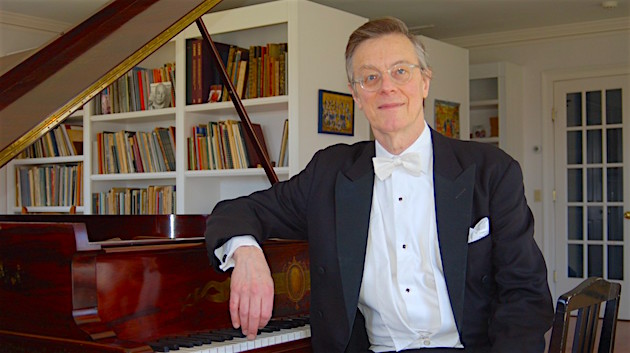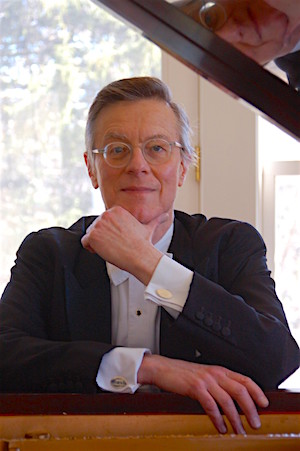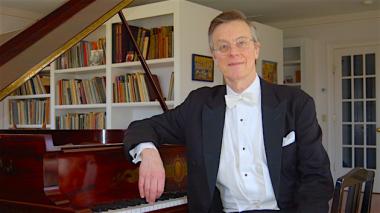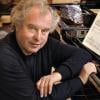
In his Nov. 9 recital at the Green Music Center, Peter Serkin played the piano with his feet as much as his hands. From the first note of Mozart’s Adagio in B Minor (K540) to the final one of Bach’s Goldberg Variations, Serkin’s right foot was as active as his right hand, tapping incessantly on the sustain pedal, usually with the lightest of touches.
The effect of all that tightly controlled sustain, along with occasional use of the soft pedal, was a muted, legato sound that connected all the notes without letting them ring out. The main dynamic was mezzo-piano, with rare stretches of mezzo-forte, and only a few fortes, each of which fell well short of fortissimo.
This eclectic approach served Serkin well in the Mozart Adagio, one of the composer’s most serene meditations on life and death. Serkin seemed possessed of utter calm as he began, and the subsequent notes flowed together seamlessly. The languid pace was like floating on a cloud, observing the tragic earth below through a filter of heavenly sound. The depth of emotion was remarkable, and the beat was rock steady.
Even though Serkin sustained the notes with his right foot, he seemed determined to lengthen the sustain by applying finger vibrato to the keys. Such vibrato had no effect on the sound, but it did cast Serkin in the role of a string player sweetening each note with a gentle movement of the hand. In another quirk, Serkin sometimes played with his wrists below the keyboard, a sure recipe for diminished attack from above.
For the next piece, Serkin moved up 30 Köchel numbers to the Mozart Piano Sonata in B-flat Major (K570). This relatively simple piece was again a perfect foil for Serkin’s lapidary approach. The melodic lines were spare and elegant, and the tone was crystalline. In the middle movement, the tempo was so slow that the sonata seemed on the verge of dissolving, but Serkin persevered, carrying the melody forward until a triumphant restatement at the end.

Serkin first recorded the Goldberg Variations in 1965, when he was 18 years old. His interpretation has changed little since then, but his ability to make each variation distinctive has deepened. All 30 variations were clearly delineated, and each one had its own character.
Purists in the audience might have been shocked to discover that Serkin pedaled Bach just as much as Mozart, but the modern intrusion ultimately served to highlight yet another facet of Bach’s kaleidoscopic genius. Serkin pedaled from the outset and indulged in rubato for several complex passages. Some of Bach’s many runs were submerged by the pedaling, but the melodic line was always prominent.
Serkin was so fastidious in his efforts that he stared constantly at the keys, his neck and head arching over the keyboard like a bird of prey. A few inches more and he would have hit the top of the instrument. Upper body movement was notably absent, but he frequently lifted his hands way off the keys when playing staccato, and his cross-hand playing was a marvel to behold.
The variations are grouped in cycles of three, with every third variation being a canon, where the melody of one line is replicated by another line a few measures apart. In the first canon, the melodies begin on the same note; in the second, they begin a major second apart; in the third, a major third apart, and so on until the canon reaches beyond an octave. This superstructure helps give the variations forward momentum and a sense of inevitability.
Serkin harnessed the superstructure magnificently, never letting go in a relentless drive to the finish. Each variation expanded the realm of melodic, harmonic and rhythmic possibility. Some were very slow, a few were blazingly fast, but each was its own world. The last set of variations (Nos. 28–30) was a particular standout. No. 28 featured an impeccably sustained trill; No. 29 a dazzling array of cascading notes; and No. 30 (a quodlibet instead of a canon) a martial summoning of all the performer’s energies.
The return to the opening aria at the end was a revelation. It’s still hard to believe that Bach could have found so much within the tune, or that Serkin could offer such a unified, transcendent performance.




